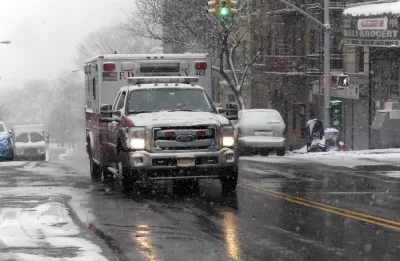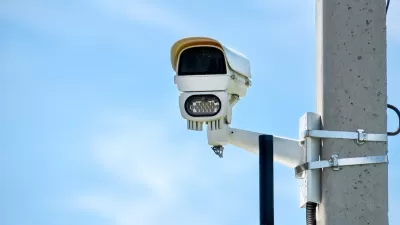It's not just death from gun violence where the U.S. is an outlier. The New York Times compiled traffic fatality data showing that other developed nations have greatly lower traffic death rates, which wasn't historically the case.

Over 45 million Americans took to the highways this Thanksgiving holiday weekend, and increase of 3.2 percent over last year, the greatest number since 2005, according to the AAA.
"Unfortunately, they will have to travel on the most dangerous roads in the industrialized world," writes David Leonhardt, op-ed columnist for The New York Times, on Nov. 19.
Using data supplied by the 35-member Organisation for Economic Cooperation and Development (OECD), The Times composed a chart, "Deaths per billion vehicle miles traveled," for eight nations, including the United States, showing the change in fatality rates from 1990 to 2015. Fifteen years ago, the U.S. has the third lowest; now it has the highest among these nations. While the rates decreased for all nations, it's been slowest in the U.S.
"I was unaware of this country’s newfound outlier status until I recently started reporting on the rise of driverless cars," writes Leonhardt.
I’ve become convinced they represent one of the biggest changes in day-to-day life that most of us will experience. Within a decade, car travel will be fundamentally altered. “This is every bit as big a change as when the first car came off the assembly line,” Senator Gary Peters (D) of Michigan told me.
We don’t need to wait for the arrival of futuristic self-driving machines to do better. Other countries have systematically analyzed the main causes of crashes and then gone after them, one by one. Canada started a national campaign in 1996.
Another factor: speed. Leonhardt wants more speed cameras utilized, as they do in Great Britain. Other factors are noted in the 2014, European Transport Research Review study, "Why is road safety in the U.S. not on par with Sweden, the U.K., and the Netherlands?" co-authored by Michael Sivak of the University of Michigan Transportation Research Institute.
Some of these safety efforts, such as speed cameras and lower speed limits, may require legislation.
"Which is part of the reason I’m so excited about driverless technology," adds Leonhardt.
It will let us overcome self-destructive behavior, without having to change a lot of laws. A few years from now, sophisticated crash-avoidance systems will probably be the norm. Cars will use computers and cameras to avoid other objects. And the United States will stand to benefit much more than the rest of the industrialized world.
It should be noted that Leonhardt used 2015 traffic fatality data. Last month, the National Highway Traffic Safety Administration (NHTSA) reported 2016 fatality data: an increase of 5 percent to 37,461 people. On Nov. 21, the National Transportation Safety Board released fatality data for 2016 for five modes of transportation.
As for fatalities this weekend, the National Safety Council estimates [pdf] that there will be 421 traffic fatalities from crashes during the holiday period, well above the six-year average of 393 from 2011-2016.
Hat tip to Loren Spiekerman.
FULL STORY: America Is Now an Outlier on Driving Deaths

Planetizen Federal Action Tracker
A weekly monitor of how Trump’s orders and actions are impacting planners and planning in America.

Congressman Proposes Bill to Rename DC Metro “Trump Train”
The Make Autorail Great Again Act would withhold federal funding to the system until the Washington Metropolitan Area Transit Authority (WMATA), rebrands as the Washington Metropolitan Authority for Greater Access (WMAGA).

The Simple Legislative Tool Transforming Vacant Downtowns
In California, Michigan and Georgia, an easy win is bringing dollars — and delight — back to city centers.

The States Losing Rural Delivery Rooms at an Alarming Pace
In some states, as few as 9% of rural hospitals still deliver babies. As a result, rising pre-term births, no adequate pre-term care and "harrowing" close calls are a growing reality.

The Small South Asian Republic Going all in on EVs
Thanks to one simple policy change less than five years ago, 65% of new cars in this Himalayan country are now electric.

DC Backpedals on Bike Lane Protection, Swaps Barriers for Paint
Citing aesthetic concerns, the city is removing the concrete barriers and flexposts that once separated Arizona Avenue cyclists from motor vehicles.
Urban Design for Planners 1: Software Tools
This six-course series explores essential urban design concepts using open source software and equips planners with the tools they need to participate fully in the urban design process.
Planning for Universal Design
Learn the tools for implementing Universal Design in planning regulations.
Smith Gee Studio
City of Charlotte
City of Camden Redevelopment Agency
City of Astoria
Transportation Research & Education Center (TREC) at Portland State University
US High Speed Rail Association
City of Camden Redevelopment Agency
Municipality of Princeton (NJ)




























